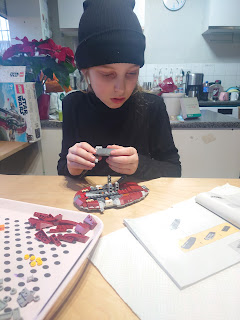Hey readers,
Entering the realm of cervical screenings can be a mix of anticipation and uncertainty for many women in the UK.
If you're gearing up for your first cervical screening or just curious about the process, here's a glimpse into what you can expect.
1. The Invitation.
It typically starts with a letter from your local National Health Service (NHS) inviting you for a cervical screening.
The letter includes essential details such as the purpose of the test, the venue, and how to schedule your appointment.
It's a proactive step towards ensuring women's health, emphasizing the importance of regular screenings.
2. Scheduling the Appointment.
Upon receiving the invitation, it's time to schedule your appointment. Most screenings are conducted at your GP's surgery or a local sexual health clinic.
Be sure to choose a date and time that suits your schedule, as this ensures you're in a calm and comfortable mindset for the procedure.
3. The Screening Process.
When the day arrives, a trained healthcare professional, often a nurse, will guide you through the process.
The screening involves taking a small sample of cells from the cervix using a soft brush.
While it might be momentarily uncomfortable, the procedure is quick and generally painless.
Communicate any concerns or anxieties with the healthcare provider to make the experience more manageable.
4. Confidentiality and Privacy.
Rest assured, your privacy is a top priority during cervical screenings.
The healthcare professional will ensure you're comfortable and adequately covered throughout the process.
They are well-trained to maintain confidentiality, fostering an environment where you feel secure discussing your health.
5. Results and Follow-up.
After the screening, the collected sample is sent to a laboratory for analysis.
It usually takes a few weeks to receive the results. The letter you receive will clearly explain the findings.
Most screenings come back normal, offering reassurance. If abnormalities are detected, don't panic it doesn't necessarily indicate cancer.
Further tests or treatments may be recommended based on the severity of the findings.
6. Emotional Support.
It's normal to feel a range of emotions during and after the screening process.
If you have concerns or questions, don't hesitate to reach out to your healthcare provider.
Emotional support is an integral part of the screening journey, and professionals are there to address your needs and provide guidance.
7. Regular Screenings.
Cervical screenings are generally recommended every three to five years, depending on your age and previous results.
Consistency in attending screenings is crucial for early detection and effective prevention.
In conclusion, undergoing a cervical screening in the UK is a vital step towards maintaining your reproductive health.
By understanding the process and embracing the regular screenings, you empower yourself with knowledge and contribute to the proactive care of your well-being.
Remember, you're not alone – the healthcare professionals are there to guide you every step of the way.
Cheers for reading X


















.png)
.png)
.png)
.png)
.png)
.png)










